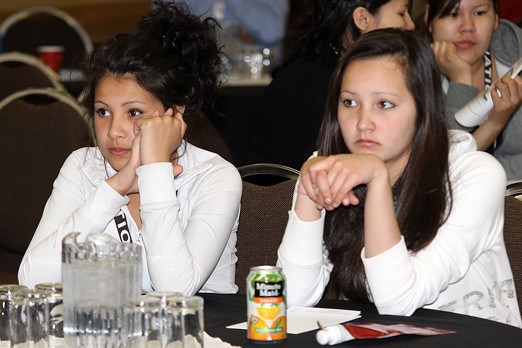All Nishnawbe Aski Nation Deputy Grand Chief Terry Waboose wants is an equal playing field.
With not enough money committed to on-reserve students, and others forced to fend for themselves in communities far from their traditional home, convincing Aboriginal youth that education is the proper path to follow is not always easy.
NAN’s educational critic says it’s time for change, and called for it this week at the First Nations governing body’s fourth annual education awareness week conference, held in Thunder Bay.
The challenges are far too many, he said.
"One of the items that they’ll be talking about is how do we support students that are here," he said, a timely thought in the wake of the confirmation of the death of missing 15-year-old Webequie First Nation student Jordan Wabasse.
It marked the seventh death of an Aboriginal student in the past decade, a sign that the system is at least partially broken, Waboose said.
"There’s going to be a panel of some of the agencies here in the city who try to support some of the students while they’re going to high school. As you’re aware, it’s been an issue lately, particularly with some of the students we’ve lost over the last number of years," he said.
One solution could be better schools on remote reserves, which might allow students to remain at home with their families, rather than be carted off to unfamiliar territory in a tempting city like Thunder Bay, where distractions are a 24/7 matter.
"Ideally that’s what you want, is to have your students schooled in their home communities. That’s exactly what I’m talking about when I say the resources have to go to the First Nations themselves so that if a community is big enough, or the size warrants having a high school, then I think they should be afforded that opportunity."
It’s not like it’s not happening in other non-native communities in Northern Ontario, he added, noting there are plenty of small towns that still offer school services despite declining populations.
James Cutfeet, the director of education at the federal department of Aboriginal Affairs, said success is needed now in order for the next generation of First Nations people to succeed at life.
Cutfeet said the federal government’s switch to a results-based measurement system means teachers are now going to be gauged by the achievement of their students and their ability to read and write at the appropriate levels.
The $26-million student success programs should also have an impact, he continued.
"This program encourages educators and parents to work together, to develop school success plans, implement student learning assessments and establish performance measurements to assess and report on school and student progress," Cutfeet said. "All of these efforts are based on improving literacy, numeracy and student retention."
However, there’s more work to be done, he said.
One area he’d like to see improved is the development of a tuition agreement resource guide to further address the matter of First Nations education off-reserve. And special education services also need attention, he said.
The conference continues throughout the week.
